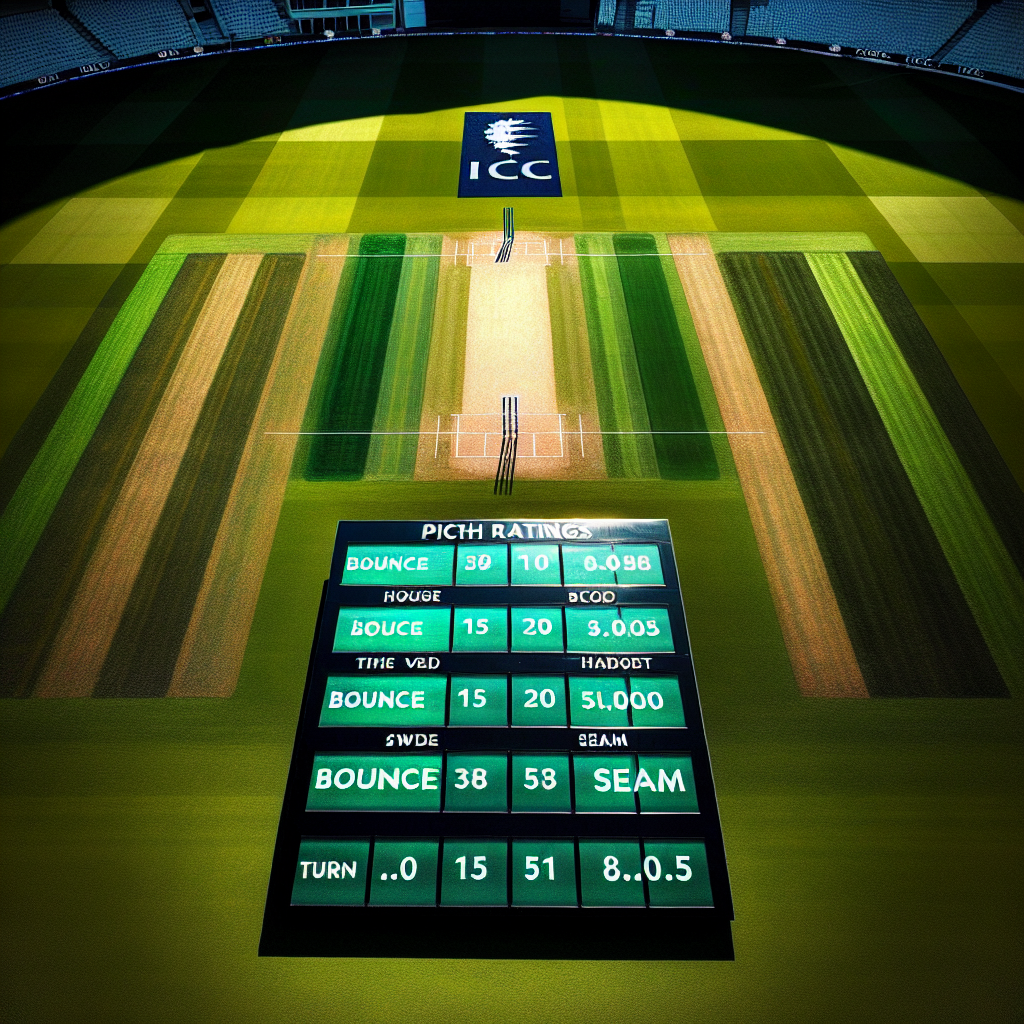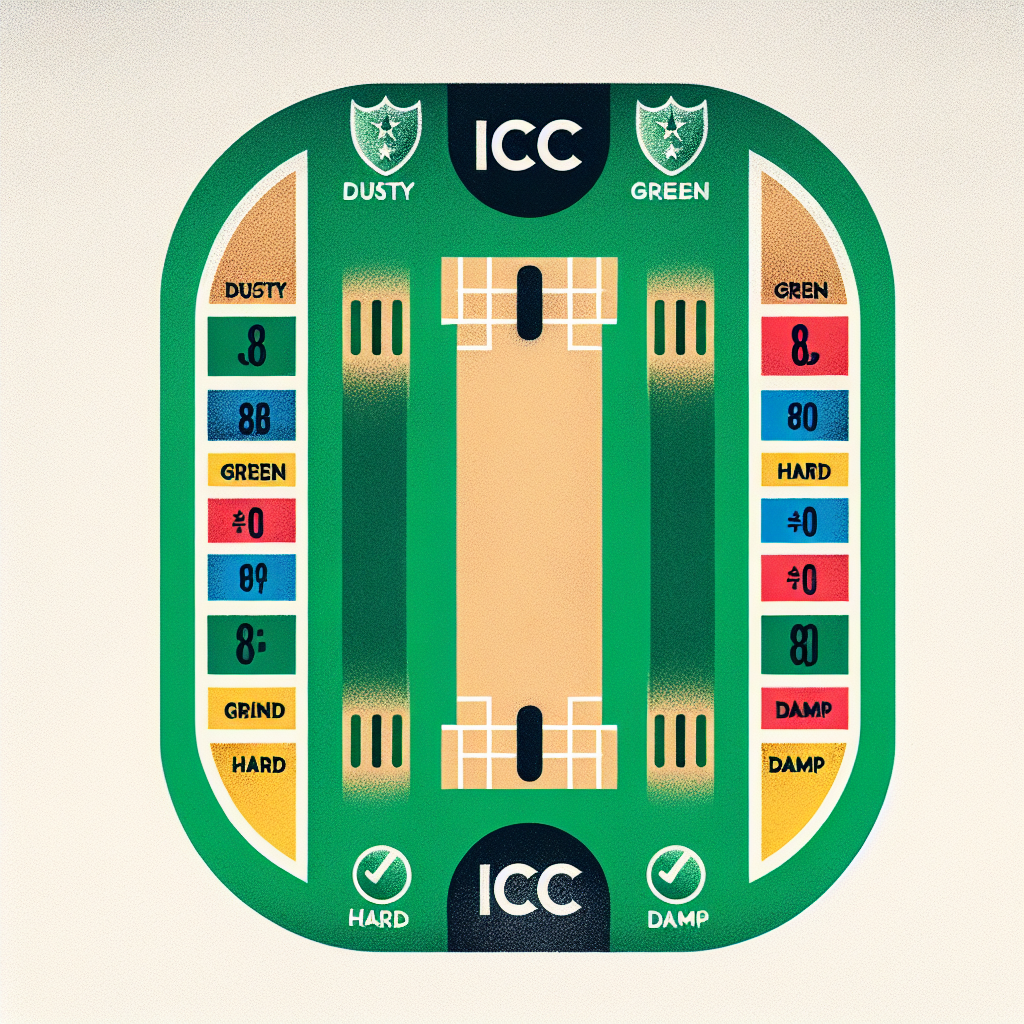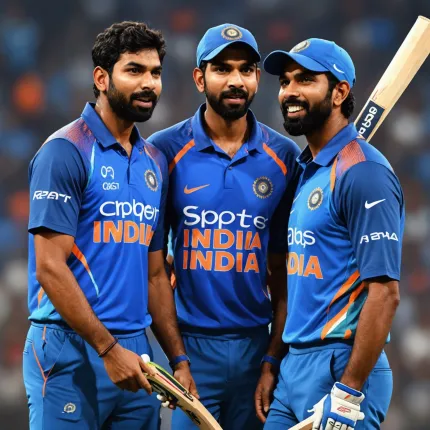Icc pitch ratings

Cricket, a sport with a rich history and global following, is as much about the playing conditions as it is about the players. One of the critical aspects of these conditions is the pitch, which can significantly influence the outcome of a match. The International Cricket Council (ICC) has established a system for rating pitches to ensure fairness and maintain the integrity of the game. This article delves into the intricacies of ICC pitch ratings, exploring their importance, methodology, and impact on the sport.
What Are ICC Pitch Ratings?
The ICC pitch ratings are a standardized system used to evaluate the quality and performance of cricket pitches worldwide. These ratings are crucial for maintaining the balance between bat and ball, ensuring that neither has an undue advantage. The ratings are assigned by match referees after each international match and are based on several criteria, including bounce, seam movement, and spin.
The Importance of Pitch Ratings
Pitch ratings play a vital role in the world of cricket for several reasons:
- Ensuring Fair Play: By maintaining a balance between bat and ball, pitch ratings help ensure that matches are fair and competitive.
- Player Safety: A well-maintained pitch reduces the risk of injuries, particularly those caused by unpredictable bounce or excessive wear.
- Match Quality: High-quality pitches contribute to exciting and engaging matches, which are crucial for maintaining fan interest and the sport's global appeal.
- Venue Accountability: Regular assessments encourage venues to maintain high standards, ensuring that they remain eligible to host international matches.
How Are Pitches Rated?
The ICC uses a detailed methodology to rate pitches, which involves several key steps:
Criteria for Evaluation
Match referees assess pitches based on the following criteria:
- Evenness of Bounce: Consistent bounce is crucial for both batsmen and bowlers. A pitch with uneven bounce can be dangerous and unpredictable.
- Seam Movement: While some seam movement is expected, excessive movement can make batting extremely difficult.
- Spin: A pitch should offer some assistance to spinners, but excessive spin can skew the balance in favor of bowlers.
- Wear and Tear: The pitch should not deteriorate too quickly, as this can lead to an unfair advantage for bowlers.
Rating Scale
Pitches are rated on a scale ranging from "Very Good" to "Poor," with each category reflecting the overall quality and performance of the pitch:
- Very Good: Offers a fair contest between bat and ball, with consistent bounce and minimal wear.
- Good: Generally balanced, with some assistance for both batsmen and bowlers.
- Average: Acceptable but may have minor issues such as uneven bounce or excessive wear.
- Below Average: Significant issues that affect the quality of play, such as excessive seam movement or spin.
- Poor: Severely affects the balance of play, potentially leading to an unfair contest.
Case Studies: Notable Pitch Ratings
To better understand the impact of pitch ratings, let's examine a few notable cases:
2017 Pune Test: India vs. Australia
The pitch at Pune for the first Test between India and Australia in 2017 was rated "Poor" by the ICC. The match ended in just three days, with spinners dominating the game. The excessive turn and unpredictable bounce led to criticism from players and experts alike, highlighting the importance of maintaining pitch quality.
2018 Johannesburg Test: South Africa vs. India
The Wanderers pitch in Johannesburg was rated "Poor" after the third Test between South Africa and India in 2018. The pitch offered excessive seam movement and uneven bounce, posing a significant risk to player safety. The match referee's report emphasized the need for pitches to provide a fair contest while ensuring player safety.
The Impact of Pitch Ratings on Cricket
ICC pitch ratings have a profound impact on various aspects of cricket:
Influence on Venue Selection
Venues with consistently poor ratings may face sanctions, including the loss of hosting rights for future international matches. This encourages ground staff to maintain high standards and invest in pitch preparation and maintenance.
Strategic Considerations for Teams
Teams often tailor their strategies based on expected pitch conditions. Accurate pitch ratings help teams prepare effectively, selecting players and formulating game plans that suit the conditions.
Fan Engagement and Experience
High-quality pitches contribute to exciting matches, which are crucial for fan engagement. Consistently poor pitches can lead to one-sided contests, diminishing the spectator experience and potentially affecting viewership and revenue.
Challenges in Pitch Rating
Despite its importance, the process of pitch rating is not without challenges:
- Subjectivity: While the ICC provides guidelines, the assessment of pitches can be subjective, leading to inconsistencies in ratings.
- Environmental Factors: Weather conditions can significantly affect pitch behavior, complicating the rating process.
- Pressure on Curators: Curators face immense pressure to prepare pitches that meet ICC standards while also catering to local conditions and team preferences.
Future of ICC Pitch Ratings
As cricket continues to evolve, so too will the approach to pitch ratings. The ICC is exploring ways to enhance the objectivity and accuracy of pitch assessments, including the use of technology and data analytics. These advancements could lead to more consistent ratings and better-informed decisions regarding venue selection and match preparation.
Conclusion
ICC pitch ratings are a crucial component of modern cricket, ensuring fair play, player safety, and high-quality matches. While challenges remain, ongoing efforts to refine the rating process promise to enhance the sport's integrity and global appeal. As fans and stakeholders, understanding the significance of pitch ratings allows us to appreciate the complexities of cricket and the meticulous efforts that go into maintaining its standards.
In summary, ICC pitch ratings are not just about evaluating the playing surface; they are about preserving the spirit of cricket, ensuring that every match is a true contest between bat and ball, and providing fans with the thrilling experience they have come to expect from this beloved sport.





